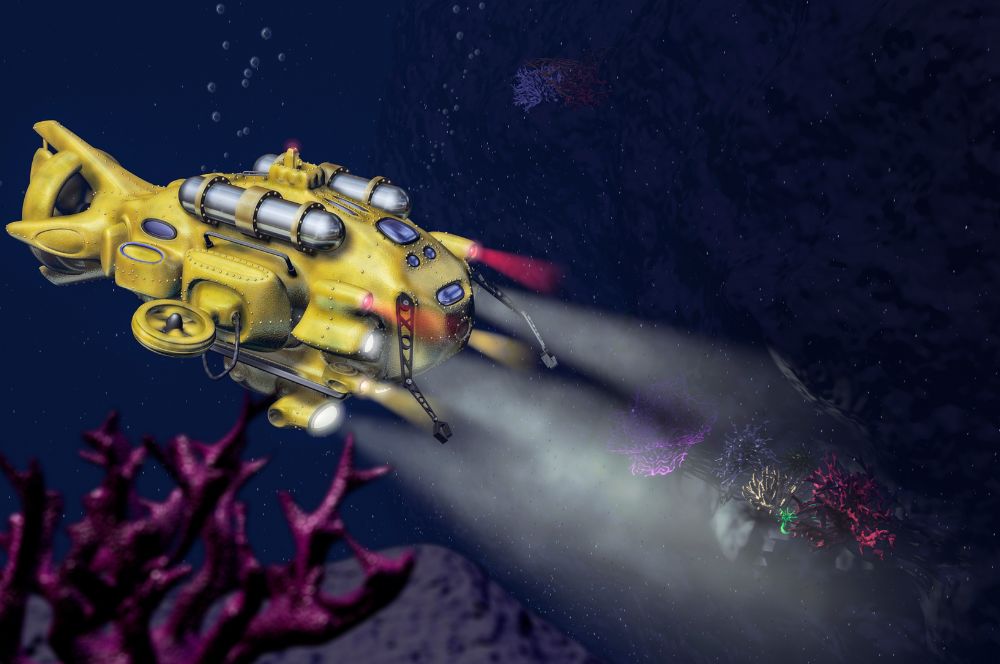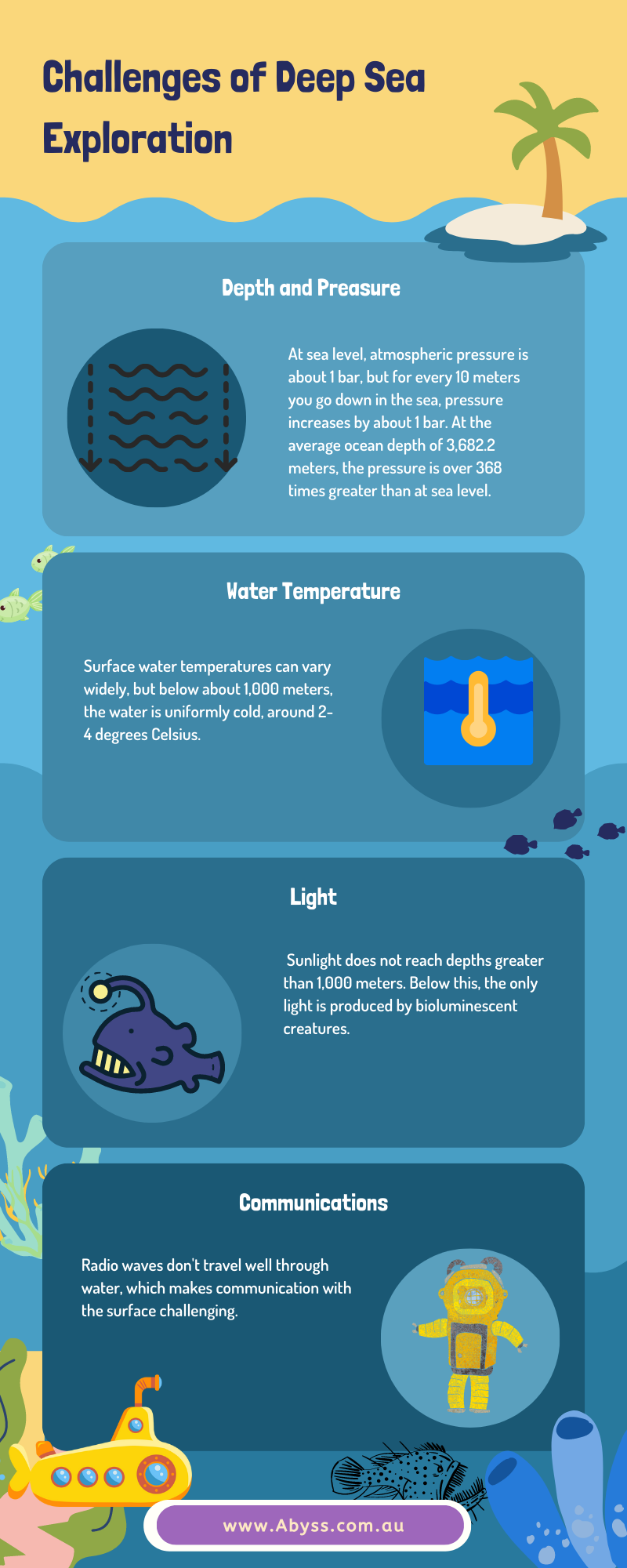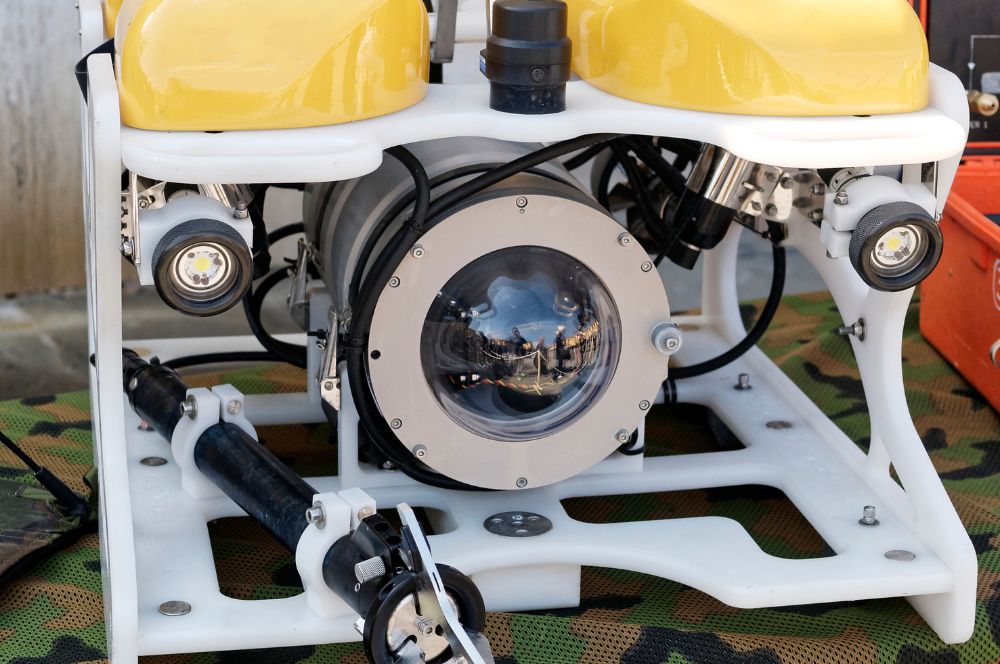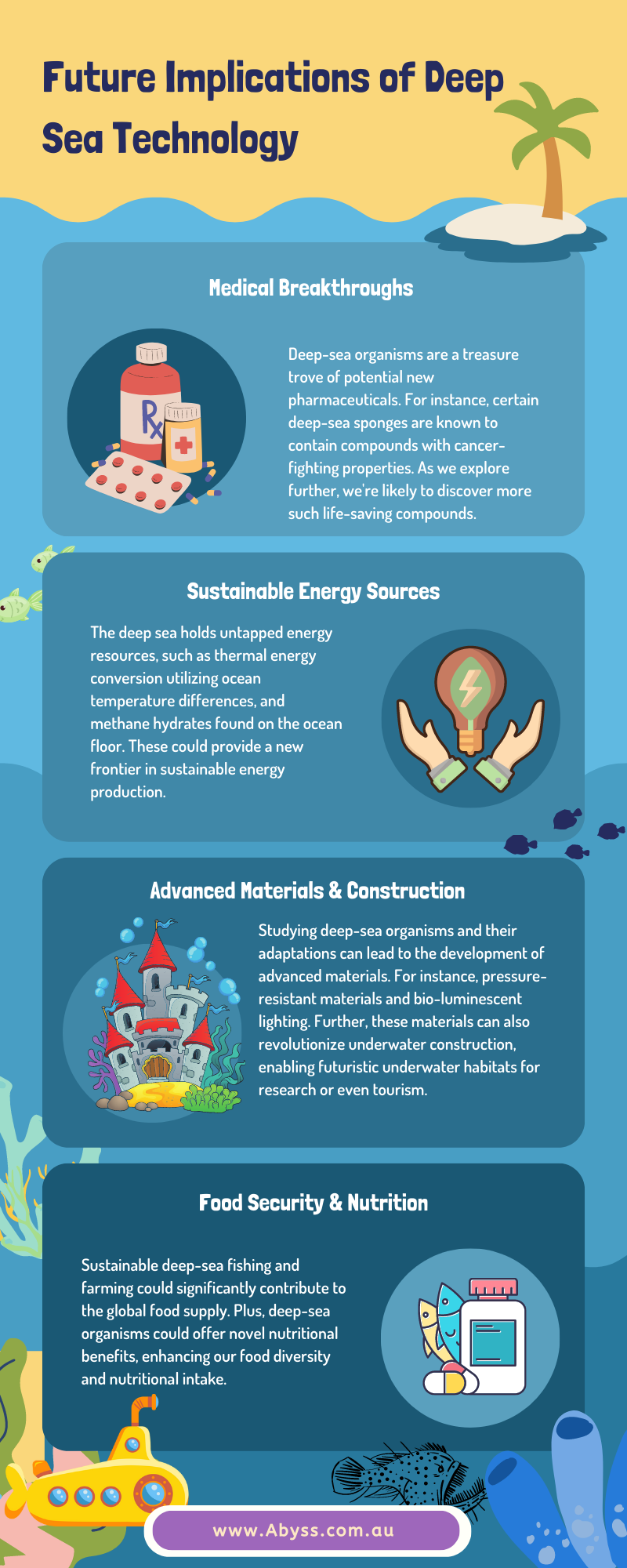You have 0 product(s) in your cart.
Abyss Scuba Diving
The Abyss: Unveiling Deep Sea Technology & Its Impact On Our Lives

The Abyss: Deep Sea Technology and Its Impact on Our Daily Lives
For ages, the ocean's deep abyss has captivated scientists who have ventured into it extensively. This expansive and undiscovered territory harbours mysteries that profoundly impact our perception of the world and daily existence. Technology is pivotal in this pursuit, not only for unearthing novel discoveries but also for shaping our tomorrow.
The Challenges of Deep Sea Exploration
Deep sea exploration is an exciting and vital field of research that involves investigating the mysteries of the deep ocean. This area of exploration has enabled scientists and researchers to make promising advancements in marine science, from discovering new species and ecosystems to developing new technologies. Despite the breakthroughs, deep-sea exploration remains a challenging and dangerous task, fraught with physical and technical hurdles that experts must surmount.
One major challenge of deep-sea exploration is the crushing pressure that the deep ocean exerts on any man-made machinery, submarines or unmanned vehicles that enter into its depths. At a depth of 4,000 meters (~13,000 feet), the pressure is over a thousand times greater than at the surface, creating a danger that can easily lead to machinery failure and compromise the mission. It is quite difficult for scientists to design machines that can withstand and function correctly in such a high-pressure environment.
Temperature is another obstacle to deep-sea exploration. As water pressure increases, so does the coldness of the ocean depths, posing a challenging technical and physical risk. The low temperatures can affect the equipment's performance or slow research progress, compromising data gathering and reducing exploration efficiency.
Additionally, the absence of light further complicates the exploration of the deep sea and brings in more challenges. The light intensity decreases significantly as depth increases, making it challenging for scientists to observe marine life or the living organisms in these depths. Research submarines are equipped with bright lights to help illuminate their surroundings. Still, this method is insufficient for observing elusive or bioluminescent creatures in their natural habitats, making it challenging to collect data on these remarkable organisms living in this ecosystem.
The hostilities encountered in these extreme environments pose a significant challenge. Harsh weather conditions, heavy currents, and unpredictable movements of sea creatures, including whales and sharks, can pose additional hazards for scientists exploring the deep-sea environment. Instrument failures, communication challenges, and getting lost in the vast darkness of the ocean floor are other dangers that explorers have to contend with.
While deep-sea exploration is a significant field of discovery that has brought about many advances in marine science, the challenges it presents to researchers should not be overlooked. The crushing pressure, bone-chilling temperatures, lack of light, and adverse living conditions make the exploration process an extreme ordeal for scientists. These obstacles continue to pose complicated challenges that require innovative and creative solutions. We applaud and appreciate those who endeavour to explore the ocean's vast depths, constantly seeking to expand our knowledge and understanding of this fascinating and largely unexplored environment.

Pioneering Technology in Deep Sea Exploration
Deep sea exploration is a fascinating and vital field of research that has led to many breakthroughs in marine science. To delve into the ocean's depths, researchers rely on groundbreaking technologies and innovative methods that enable them to study the unique and complex ecosystem found in these remote oceanic regions. In this article, we'll explore the significant technological advancements that have paved the way for deep-sea exploration and consider their critical role in unlocking the ocean floor's mysteries.
One of the most critical technologies that have helped researchers observe the hidden treasures of the deep sea is submarines. These submersibles are carefully designed to withstand the immense pressure of deep-sea environments while simultaneously providing researchers with access to distant and unfathomable places. Advanced submarines, like the Alvin, are equipped with a wide range of tools and scientific instruments that allow researchers to collect samples of marine life, map the ocean floor, and even document new species. Submarines enable researchers to reach the most solitary and remote places on the ocean floor that would otherwise be inaccessible by any other means.
Another valuable technology that facilitates deep-sea exploration is remotely operated vehicles (ROVs). These unmanned robots explore the deep sea and gather scientific data and samples from beneath the surface. ROVs are equipped with electronic cameras and sensory instruments that allow them to capture high-definition videos and images of the ocean floor, deep-sea creatures, and geological features. ROVs come in several sizes and shapes and can be customized to perform specific functions.
Autonomous underwater vehicles, or AUVs, are another technology that has revolutionized deep-sea exploration. AUVs are unmanned vehicles equipped with an array of sensors, sonars, and cameras, enabling them to navigate through dark and cold deep-sea environments. Unlike ROVs, AUVs operate independently, programmed to perform a predetermined set of tasks before returning to a remote base. The ability to operate autonomously makes AUVs highly effective and efficient, suitable for conducting surveys of vast oceanic regions' geological features and capturing enormous amounts of data.
Aside from these mechanical technologies, deep-sea diving suits are another essential tool explorers use. These high-tech suits allow researchers to delve up to 1,000 feet beneath the ocean surface, enabling them to get remarkably close to deep-sea creatures without the need for submersibles. Deep-sea diving suits function similarly to space suits; they are designed to maintain air pressure, provide sufficient life support, monitor the dive, and resist the immense pressure of the deep sea.
Finally, sonar technology is one of the most critical technologies that facilitate deep-sea exploration. The technology relies on the use of sound waves that can travel across the deep ocean environment without losing their energy. As a result, sonar can help researchers map the ocean floor and locate new ecosystems and marine life. Sonar technology has revolutionised our understanding of the deep ocean environment, its immense pressures, and the creatures that inhabit it.
The advanced technologies used in deep-sea exploration play a pivotal role in understanding the world's oceanic regions. Combining submarines, ROVs, AUVs, deep-sea diving suits, sonar, and numerous other sensor-linked instruments significantly advances our understanding of this remote biosphere. The ability to withstand immense pressure, the harsh environment, bone-chilling temperatures, restricted light conditions, and unpredictable movements have made this field of study extremely vital to modern science and our future. These technologies have opened doors that were once unimaginable and will continue to reveal new discoveries and advancements for many decades to come.
The Impact of Deep Sea Technology on Everyday Life
Deep-sea technology is a technological marvel that has made remarkable contributions to virtually all areas of life, from commonly used applications to specialized industrial, space, and aviation applications. While many believe deep-sea technologies are limited to oceanography research or marine biology, this article explores the various fields of human life that leverage these technologies to improve our world.
Wireless Communication: We probably don't immediately think of sonar and underwater technology when we think of wireless communication. However, these are the primal origins of wireless communication as we know it today. Early sonar developed for submarines during World War II laid the foundation for wireless communication technologies. Today, the same sonar technology used to track enemy vessels is used to track schools of fish; researchers use underwater acoustic communication to track the movement and behaviour of marine life, making it an indispensable tool for marine environmental studies.
Corrosion-Resistant Materials: Corrosion-resistant materials are developed to withstand challenging deep-sea environment conditions, where the reduction-oxidation process leads to corrosion and damage. However, today, these natural defence mechanisms have found their way into various industries, including construction, manufacturing, transportation, and energy. Corrosion-resistant materials are crucial for constructing structures like bridges, pipelines, and oil rigs, where substances like water, contaminants, and other environmental forces quickly deteriorate metals or alloys. From industrial applications to household tools, including kitchen sinks, coatings, and pipelines, these materials have undoubtedly enhanced infrastructure while ensuring it lasts for an extended period.
Remotely Operated Vehicles: (ROVs): Remotely Operated Vehicles (ROVs) initially developed to facilitate deep-sea exploration; these unmanned robots have found their way into various industries, including sectors like mining, energy, aerospace, and manufacturing. The user-controlled robots are less expensive, more efficient, and can navigate with mere precision in tight spaces. They are also used in the medical industry, where they can actively undergo surgeries or perform medical procedures from remote locations.

Pressure-resistant glass and materials: Pressure-resistant glass and materials initially used as windows for submersibles, naval ships or oceanographic research, researchers developed these materials to withstand the immense pressure of the deep sea. Today, these materials are crucial in aviation and aerospace manufacturing, used for cockpit displays and aeroplane windows. They are also essential for smartphones and other consumer devices, protecting the delicate internal components from the external environment, and preventing scratches or cracks that could inevitably ruin a device.
With the increasing popularity of telemedicine and telesurgery, these pressure-resistant materials are all the more important for ensuring safe and secure communication between medical professionals. Finally, they can be used in underwater habitats or exploration vessels to ensure that those on board remain safe from the immense pressures experienced at great depths.

Deep-sea technology is essential in marine science and various aspects of human life. From the development of wireless communication in the early days of sonar to corrosion-resistant materials that protect infrastructure, ROVs that facilitate mining and underwater research and pressure-resistant glass in our everyday devices, deep-sea technology has found its way into every aspect of human life. Continuous research and advancements in this field are essential to unlock new secrets of the ocean and drive technology development for years to come while improving our daily lives.
Future Implications of Deep Sea Technology
Deep-sea technology continues to drive innovation and scientific discovery, with new breakthroughs being made every year. While we have already seen some incredible advancements, such as the development of specialized materials and unmanned robots, the future implications of deep-sea technology for everyday life promise to be even more exciting.
One significant area of future application is the potential use of deep-sea microbes. Many scientists believe that deep-sea microbes may hold the key to unlocking new medical therapies and treatments. Researchers are exploring the potential for synthesizing new drugs from these organisms, many of which have unique adaptations allowing them to survive in extreme environments. By studying these microbes and harnessing their genetic sequences, researchers hope to develop new therapies for a range of conditions.
Another ongoing research area that has massive potential is the development of even more advanced materials based on deep-sea organisms' adaptations. The deep sea contains many creatures with unique properties, such as bioluminescence, extraordinary strength, or heat resistance. Researchers hope to replicate these properties to create materials for everything from construction to textiles. By understanding how these organisms have adapted to survive in the deep sea, scientists hope to develop new materials and manufacturing techniques that could revolutionize our lives.
Finally, deeper exploration of the oceans could also lead to the discovery of new resources, such as new sources of clean energy and minerals. With ongoing advancements in deep-sea technology, we could unlock the potential of harnessing energy from ocean currents or waves, providing a sustainable power source for future generations. These areas of exploration could also uncover new sources of valuable minerals used in everything from electronics to transportation to medicine.
The future implications of deep-sea technology promise to be both exciting and revolutionary. With ongoing research and cutting-edge technology, the deep sea could be the key to unlocking new medical therapies, developing more advanced materials, and discovering new resources. As we continue to explore the mysteries of the deep sea, we will uncover countless new applications that will benefit our daily lives and the world as a whole.

We began a remarkable journey into the abyss, and what we've experienced has far exceeded our expectations. Not only have we come to understand more about Earth's final frontier, but its effects are permeating our everyday lives, too, in sometimes unexpected ways. Every time we dip beneath the ocean's waves, unveil aquatic secrets, explore untouched landscapes and develop innovative findings, it reminds us of how much possibility there is in the underwater world. We're one step closer to a future where the line between life above and below water gradually dissolves into complete synergy with remarkable mutual benefits.
References and Further Reading
1. "The Mariana Trench: Earth's Deepest Place" - National Geographic. Link
2. "How We Explore the Ocean" - NOAA's National Ocean Service. Link
3. "Technologies for Ocean Exploration" - NOAA's National Ocean Service. Link
4. "Underwater inspections with ROV, underwater robots or underwater drones" - CSpect. Link
5. "The Deep Sea Technology Creating a New Generation of Drugs" - The Guardian. Link
6."For a More Sustainable Future, We Must Explore and Better Understand What Lies Beneath America’s Ocean Waters " - The Whitehouse Link
These references provide a good starting point for in-depth research on each topic discussed in the article.
Recent Posts






